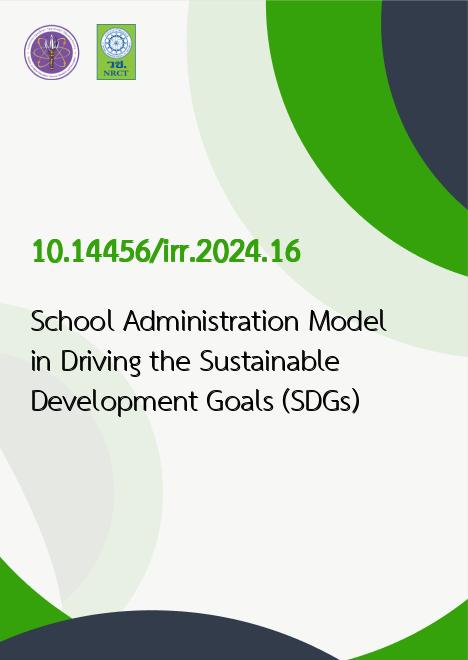
|
School Administration Model in Driving the Sustainable Development Goals (SDGs) |
|---|---|
| รหัสดีโอไอ | |
| Creator | Jiraporn Supising |
| Title | School Administration Model in Driving the Sustainable Development Goals (SDGs) |
| Contributor | Somkiet Boonrawd, Suriya Taweeboonyawat, Ponlawat Chaichana, Choocheep Puthaprasert, Sirimas Kosanpipat |
| Publisher | Phetchaburi Rajabhat University |
| Publication Year | 2567 |
| Journal Title | Interdisciplinary Research Review (IRR) |
| Journal Vol. | 19 |
| Journal No. | 4 |
| Page no. | 39-51 |
| Keyword | School Administration Model, Sustainable Development Goals (SDGs) |
| URL Website | https://ph02.tci-thaijo.org/index.php/jtir |
| Website title | Interdisciplinary Research Review (IRR) |
| ISSN | 2697-536X |
| Abstract | The objectives of this qualitative research were 1) to synthesize structural components of the school administration model in driving the Sustainable Development Goals (SDGs) from concepts and theories, and to check empirical confirmation; 2) to investigate the problem states and the factors supporting solutions in driving the Sustainable Development Goals (SDGs); 3) to develop the school administration model in driving the Sustainable Development Goals (SDGs); and 4) to prepare the policy recommendations and guidelines for policy implementation for the school administration model in driving the Sustainable Development Goals (SDGs). Key informants consisted of forty respondents, the instruments used were a synthesis table, a confirmation form, an unstructured interview form, and a meeting record form. The data were analyzed by frequency, percentage, and content analysis and classified into issues. The study results revealed as follows: 1. The structural components consisted of nine core components with twenty-three sub-components; and the empirical confirmation was 100 percent. 2. The problem states and factors supporting solutions consisted of political stability, local adaptation, limited resources, lack of awareness, curriculum gaps, teacher preparation, monitoring and evaluation, local ownership, and teacher professional development. 3. The components of the school administration model consisted of 1) principles; 2) objectives, 3) operational procedures, 4) evaluation, and 5) conditions for achievement. 4. The policy recommendations and guidelines for policy implementation consisted of policy support, teacher professional development, curriculum enhancement, resource mobilization, community engagement, global citizenship education, monitoring and reporting, recognition and awards, and continuous improvement and evaluation. |